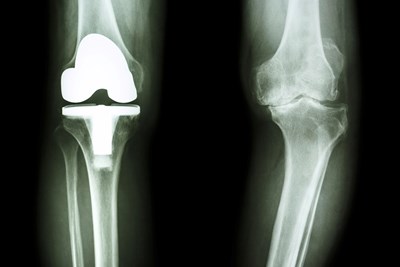In order to see optimal results with a knee replacement, a physical therapist will work with you before and after surgery. Here is an overview of what physical therapy involves.
Before Surgery
A physical therapist will show you exercises and discuss home adaptations and safety with you for after surgery. It’s better to make changes to your home before surgery, so that you are prepared when you return home after your operation.
In the Hospital
Following the procedure, you will stay in the hospital for several days. During this time, a physical therapist will work with you in order to:
- Teach you how to walk with a walker or crutches
- Show you how to get in and out of bed or a chair
- Do the flexibility and strengthening exercises you learned before surgery
Your therapist may also perform electrical stimulation, which involves placing electrodes on your skin in order to stimulate the nerves around your knee to reduce swelling and pain and promote healing. Swelling can also be decreased by applying cold packs to your knee and wearing support stocking.
Recovery Exercises
Proper rehabilitation can make your new knee better than the old one by increasing your range of motion and improving your balance and strength. In order to achieve this, your therapist will teach you the following types of exercises:
- Range-of-motion exercises: Swelling and pain you experience after surgery can restrict motion in your knee. Your therapist will show you safe exercises that can restore the range of motion to your knee.
- Balance training: Your physical therapist will teach you exercises that help with your balance once you are able to put all your weight on your knee without pain. These exercises include making quick stops or starts and turns and changes in different directions. You will also use a balance board to target your balance and knee control.
- Strengthening exercises: Following knee replacement surgery, the muscles of your thigh and lower leg may be weak, causing you to need a cane or walker. Your physical therapist will evaluate your strength and decide which strengthening exercises are best for you in order to help you walk without assistance.
- Functional training: When your pain subsides, activities you engaged in prior to surgery will be added to your physical therapy routine. For example, activities can include crossing a street, going up and down steps, or getting on and off an escalator. You will be examined by your therapist who will design a program based on your health and activity level.
Returning to other activities such as sports depend on the patient, but your therapist should be able to give you an idea of when you can return to these activities based on your progress. - Activity-specific training: Your physical therapist can also design a rehab program with additional exercises that focus on activities you do at your job or the type of sport you play. Your therapist will determine the demands the activities place on your knee and teach you how to safely manage these demands.



